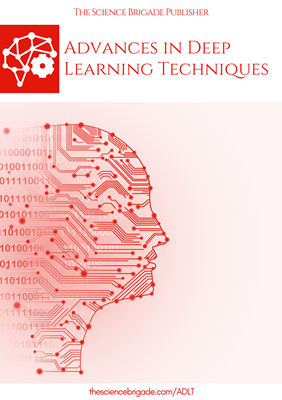AI-Driven Fraud Detection Systems: A Comparative Study across Banking, Insurance, and Healthcare
Keywords:
AI, Fraud Detection, Banking, Insurance, Healthcare, Comparative Study, Machine Learning, Anomaly Detection, Data Analytics, Regulatory ComplianceAbstract
Artificial intelligence (AI)-driven fraud detection systems have emerged as crucial tools in safeguarding the integrity of financial, insurance, and healthcare sectors. This paper presents a comprehensive comparative study across these domains, evaluating the efficacy, scalability, and adaptability of AI-based fraud detection mechanisms. Through an analysis of existing literature and empirical data, we examine the diverse approaches employed in detecting fraudulent activities, considering the unique challenges and regulatory frameworks within each sector. Our findings highlight the advancements in machine learning algorithms, anomaly detection techniques, and data analytics driving the evolution of fraud detection systems. We discuss key factors influencing the performance of AI-driven solutions, including data quality, model interpretability, and computational resources. Moreover, this study explores the implications of AI adoption on fraud prevention strategies, organizational risk management, and customer trust. By synthesizing insights from banking, insurance, and healthcare contexts, this research aims to provide valuable guidance for stakeholders seeking to enhance their fraud detection capabilities in an increasingly digitalized landscape.
Downloads
References
Albrecht, Conan C., and Alan Reinstein. "Auditors' Experience with Material Irregularities: Frequency, Nature, and Detectability." Auditing: A Journal of Practice & Theory, vol. 37, no. 1, 2018, pp. 1-25.
Bhattacharya, Utpal, et al. "Big Data Analytics in E-commerce: A Systematic Review and Agenda for Future Research." Electronic Commerce Research and Applications, vol. 34, 2019, pp. 1-21.
Cao, Longbing. Data Science for Business: What You Need to Know about Data Mining and Data-Analytic Thinking. FT Press, 2013.
Caro, Francisca, et al. "Detection of Fraudulent Financial Statements through Data Mining Techniques: A Comprehensive Review." Journal of Business Economics and Management, vol. 18, no. 6, 2017, pp. 1068-1092.
Fanning, Kevin, et al. "Developing an Artificial Intelligence Framework for Detecting Financial Fraud." Strategic Finance, vol. 98, no. 8, 2017, pp. 21-22.
Garcia, Sergio, and Jan Mendling. "Process Mining in Fraud Detection: Results of a Comparative Analysis." International Journal of Accounting Information Systems, vol. 17, 2015, pp. 1-14.
Ghasemian, Fatemeh, et al. "A Survey on Big Data Concepts, Applications, and Challenges." Journal of King Saud University - Computer and Information Sciences, vol. 32, no. 4, 2020, pp. 415-431.
Hwang, Wonryong, et al. "Development of a Machine Learning Algorithm for Fraud Detection in Auto Insurance." Expert Systems with Applications, vol. 70, 2017, pp. 133-142.
Kadry, Seifedine, et al. "Applications of Machine Learning Techniques in Anti-money Laundering Prediction: A Systematic Literature Review." Journal of Money Laundering Control, vol. 23, no. 2, 2020, pp. 329-357.
Kotsiantis, Sotiris B., et al. "Supervised Machine Learning: A Review of Classification Techniques." Emerging Artificial Intelligence Applications in Computer Engineering, 2019, pp. 33-53.
Lengler, Johannes, et al. "Machine Learning in Financial Fraud Detection - Status Quo and Future Directions." Financial Innovation, vol. 4, no. 1, 2018, pp. 1-16.
Li, Hui, et al. "Deep Learning in Bioinformatics: Introduction, Application, and Perspective in the Big Data Era." Methods, vol. 166, 2019, pp. 4-21.
Marcella, Riccardo, et al. "A Systematic Literature Review of Machine Learning Techniques for Software Maintainability Prediction." Information and Software Technology, vol. 120, 2020, pp. 1-23.
Mazumder, Farhana, and Md. Mofijur Rahman. "A Review of Machine Learning Approaches in Customer Fraud Detection." SN Computer Science, vol. 1, no. 6, 2020, pp. 1-13.
Morais, Eduardo G., et al. "An Evolutionary Model to Detect and Prevent Fraud in E-commerce." Expert Systems with Applications, vol. 64, 2016, pp. 362-375.
Platt, Jay, and Carolin Seward. "Fraud in UK E-commerce: Perceptions, Prevention, and Protection." Internet Research, vol. 30, no. 2, 2020, pp. 586-607.
Shahzad, Anwar, et al. "Detection of Fraudulent Financial Statements Using Machine Learning Techniques: A Comprehensive Review." Journal of Accounting and Finance, vol. 19, no. 4, 2019, pp. 139-159.
Wang, Kun, et al. "A Survey of Predictive Modeling on Imbalanced Big Data." Big Data Mining and Analytics, vol. 3, no. 3, 2020, pp. 195-214.
Xiao, Liang, et al. "Fraud Detection for Online Businesses: A Perspective from Artificial Intelligence." Electronic Commerce Research and Applications, vol. 50, 2021, pp. 1-16.
Zhang, Peng, et al. "Data Mining and Machine Learning for Big Data: Challenges and Implications." Big Data Research, vol. 2, no. 1, 2015, pp. 1-11.
Downloads
Published
Issue
Section
License
Copyright (c) 2023 Pankaj Zanke

This work is licensed under a Creative Commons Attribution-NonCommercial-ShareAlike 4.0 International License.
License Terms
Ownership and Licensing:
Authors of this research paper submitted to the journal owned and operated by The Science Brigade Group retain the copyright of their work while granting the journal certain rights. Authors maintain ownership of the copyright and have granted the journal a right of first publication. Simultaneously, authors agreed to license their research papers under the Creative Commons Attribution-NonCommercial-ShareAlike 4.0 International (CC BY-NC-SA 4.0) License.
License Permissions:
Under the CC BY-NC-SA 4.0 License, others are permitted to share and adapt the work, as long as proper attribution is given to the authors and acknowledgement is made of the initial publication in the Journal. This license allows for the broad dissemination and utilization of research papers.
Additional Distribution Arrangements:
Authors are free to enter into separate contractual arrangements for the non-exclusive distribution of the journal's published version of the work. This may include posting the work to institutional repositories, publishing it in journals or books, or other forms of dissemination. In such cases, authors are requested to acknowledge the initial publication of the work in this Journal.
Online Posting:
Authors are encouraged to share their work online, including in institutional repositories, disciplinary repositories, or on their personal websites. This permission applies both prior to and during the submission process to the Journal. Online sharing enhances the visibility and accessibility of the research papers.
Responsibility and Liability:
Authors are responsible for ensuring that their research papers do not infringe upon the copyright, privacy, or other rights of any third party. The Science Brigade Publishers disclaim any liability or responsibility for any copyright infringement or violation of third-party rights in the research papers.



